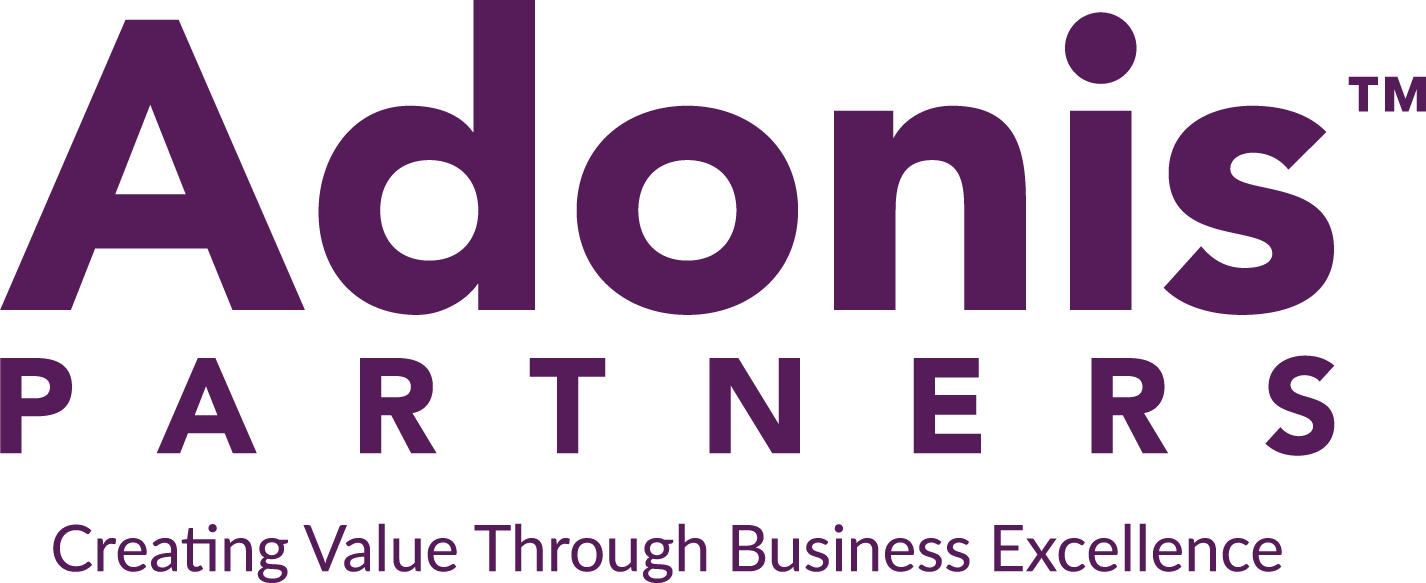
White Paper: Accelerating Value Creation in Multi-Site Operations Through Continuous Improvement

Introduction
In recent years, North American mid-market M&A has outperformed the broader market despite economic fluctuations. Through these investments, mid-market private equity firms have driven consolidation across a variety of fragmented industries, including healthcare, logistics, business and IT services, manufacturing, financial services, and energy. Beyond consolidation, these industries also offer potential value creation by leveraging scalability and operational synergies across multi-site operations. Investment strategies for multi-site operations typically emphasize optimizing operations, standardizing best practices, and enhancing efficiencies across locations. Additionally, through strategic improvements and centralization of key functions, firms can enhance profitability, streamline costs, and drive accelerated growth.
While these industries present significant value creation opportunities, successfully implementing the necessary strategies poses substantial challenges. Leadership teams must integrate acquisitions, drive transformation, and sustain growth while managing resource constraints and navigating competitive market dynamics. Investors expect rapid improvements in profitability, operational efficiency, and enterprise value, placing immense pressure on companies to deliver results quickly. This urgency demands a structured, accelerated approach to optimizing operations, capturing synergies, and enhancing financial performance.
To achieve these goals, successful organizations leverage proven Continuous Improvement (CI) methodologies such as Total Productive Maintenance (TPM), Lean Six Sigma (LSS), Project Management, Change Management, and Strategic Planning to drive efficiency and maximize value. However, despite their effectiveness, companies often face five critical obstacles that hinder execution and slow value creation. This paper explores these challenges and how Continuous Improvement (CI) strategies can help overcome them.
Key Obstacles and How Continuous Improvement Can Help Overcome Them
Lack of Organizational Alignment Around Strategy
Challenge: Leadership and their teams often struggle to align on key value creation levers. Without clear strategic alignment, different teams and functions may prioritize different or even conflicting goals, leading to inefficiencies and a lack of progress toward the company’s objectives. Misalignment can also result in disengagement, as employees may not see how their work contributes to the company’s success.
How CI helps: CI methodologies and related tools emphasize the importance of defining measurable, achievable goals that tie back to the company’s broader strategy and using data to track progress. Here are a few examples:
- DMAIC (Define, Measure, Analyze, Improve, Control) is a structured approach to problem-solving that aligns teams on common objectives. In the Define phase, a shared vision is established by clearly defining the problem(s), scope, and expected outcomes and linking targeted improvements to business goals and KPIs. In the Measure phase, the process is mapped out and data is collected to validate the current baseline of the process. In the Analyze phase, Teams agree on the true causes of problems, reducing conflicting opinions. In the Improve phase, teams work together to develop and test solutions. Lastly, in the Control phase, a plan is built to ensure sustainability of the implemented solutions so as to avoid revising the problem again in the future.
- Kaizen Events involve cross-functional teams that engage in structured, rapid improvement initiatives, ensuring alignment across departments. These events also empower frontline employees to contribute ideas and solutions, creating alignment up and down the organization. Typically results are seen immediately, or within 20 business days once all actions are concluded.
- PDCA (Plan-Do-Check-Act) framework ensures iterative learning and continuous alignment as the organization evolves. In the Plan phase, cross-functional teams define clear objectives aligned with the organization’s vision. In the Do phase, the team implements counter-measures to address the key problem being examined. In the Check phase, the change is measured to determine if the desired result was achieved and determine what was learned from the changes. Lastly, in the Act phase, the team may revisit the changes to fine-tune the outcome, or implement the changes more broadly.
The emphasis on clear frameworks and structured problem-solving approaches inherent in CI methodologies such as Lean Six Sigma ensure ongoing alignment to company goals, across teams and at all levels of the organization. With a focus on collaboration, inclusion, and repeated checks for alignment, these frameworks improve execution speed and increase value creation.
Quick Wins:
- Identify and prioritize key value drivers (asset productivity, cycle time, etc.)
- Align training and execution plans with leadership priorities.
- Use data-driven decision-making through financial analysis, employee insights, benchmarking, and variation analysis.
Case Study: $200k in Annual Savings
A healthcare company struggled with operational inefficiencies and poor cross-functional collaboration due to unintegrated acquisitions. Adonis implemented Lean and Project Management training, standardized processes, and automated claims, repurposing 20 employees and saving $200K annually.
Limited Resources: Capital and Talent Constraints
Challenge: Most PE-owned organizations emphasize resource efficiency to maximize returns, often resulting in capital constraints even for high-priority strategic initiatives. Budget limitations can prevent companies from investing in technology, talent, and process improvements, slowing the pace of value creation and reducing competitiveness. In addition, mid-market companies are likely to employ few (if any) employees with expertise in Lean Six Sigma, project management, and/or change management that would enable them to drive structured execution, facilitate cross-functional collaboration, and ensure projects remain on track. These skill gaps hinder execution and impact results as organizations struggle to implement initiatives effectively.
How CI Helps: The strategic use of expert consultants for high-value opportunities helps maximize the effectiveness of projects with limited internal bandwidth. Not only do external experts help launch and accelerate key initiatives, but these consultants also help build internal continuous improvement capabilities. The result is faster value creation than would otherwise be possible with limited internal resources and an upskilled team capable of sustaining continuous improvement efforts beyond initial implementation.
Quick Wins:
-
Utilize consulting for initial acceleration, focusing on high ROI projects first to maximize value
-
Invest in Lean Six Sigma training for high-potential employees to sustain improvements
Case Study: 2.5% Productivity Increase
A PE-backed packaging manufacturer faced operational inefficiencies and <1% productivity gains following significant capital investments. They tapped Adonis Partners to help build a structure for standardizing methodologies, implementing governance, and sharing best practices, alongside a rigorous training program. Within a year, these efforts generated $27 million in OpEx productivity and a 2.5% overall productivity increase.
Lack of Data Transparency and Standardization
Challenge: Multi-site operations, especially those that have grown through M&A, often have inconsistent practices and processes between sites. While some variation is to be expected between sites producing different products or servicing different customer segments, any variability in processes, reporting, and decision-making frameworks results in inefficiencies and makes it difficult to drive enterprise-wide improvements. Leadership teams of multi-site operations that lack standardized key performance indicators (KPIs) between sites and/or limited visibility to those KPIs will struggle to make data-driven decisions that optimize operations and resource allocation.
How CI Helps: Lean Six Sigma emphasizes the standardization of data collection, operating procedures, and environments to benchmark and optimize performance and drive consistency across sites. Identifying and replicating best practices across all locations also helps every facility operate at the highest standard. By leveraging lessons learned and successful initiatives from one site, organizations can quickly scale improvements to other locations. These improvements are enabled by various tools and frameworks:
- Value Stream Mapping (VSM), SIPOC, and Kanban help visually represent workflows and identify inefficiencies and inconsistencies across sites.
- In DMAIC’s Measure phase, metrics are standardized and agreed upon, and current performance is documented using objective data.
- The 5S Methodology organizes and standardizes workplaces to reduce variability and enhance efficiency.
- Statistical Process Control (SPC) uses control charts to maintain consistency in process performance and detect variations.
- Root Cause Analysis (RCA) uses tools like the 5 Whys and Fishbone Diagrams to expose hidden inefficiencies and process failures, improving transparency.
Quick Wins:
-
Address common benchmarking criticisms:
-
“The data isn’t accurate” → Investigate root causes and implement standard work.
-
“Our site is different” → Identify core operational similarities and align on key metrics.
-
- Introduce real-time performance tracking to enhance transparency and decision-making.
Case Study: 42 In-Depth Interviews
A leading packaging company suspected plant managers were focused on urgent tasks over important work. Adonis Partners conducted in-depth research, including DILO studies and root cause analysis, uncovering key leadership inefficiencies. They provided a strategic plan with quick wins and long-term improvements, enabling a more effective leadership team and setting the client up for sustained success.
Unclear Accountability and Ownership
Challenge: Following M&A in a multi-site operation, it is very common for site-level management and corporate teams to lack defined roles. This lack of role clarity often results in duplicated efforts, gaps in execution, and confusion over responsibilities, leading to inefficiencies and slower decision-making. Redundant functions also create inefficiencies. Without a clearly defined structure, corporate and site teams may both attempt to address the same issues, wasting valuable resources and slowing improvements.
How CI Helps: Structured methodologies such as Lean Six Sigma help ensure that every team member understands their responsibilities, processes remain transparent, and performance is measurable. Establishing explicit role definitions and decision-making responsibilities promotes clear execution pathways and avoids redundant efforts, and well-defined KPIs allow leadership to monitor progress and hold teams accountable.
Quick Wins:
-
Conduct structured discussions to clarify roles and responsibilities.
-
Develop execution frameworks to align corporate and site teams.
-
Implement “control your area” practices to reinforce local accountability.
Case Study: $600k in Annual Savings
A food solutions manufacturer faced negative EBITDA due to lost production time and unclear responsibilities. Adonis optimized scheduling, improved communication, and established accountability measures, leading to $450K-$600K in annual savings from reduced downtime and $250k from streamlined pre-batching. These operational improvements stabilized performance and positioned the company for long-term growth.
Unrealistic Timeframes Leading to Misalignment
Challenge: The urgency to deliver results rapidly can create an environment where initiatives are pushed forward without sufficient planning, leading to suboptimal outcomes. Leadership often underestimates the time required for true buy-in and alignment. When key stakeholders are not fully aligned or engaged, resistance to change can slow or derail implementation efforts, ultimately delaying results.
How CI Helps: Implementing a “Go Slow to Go Fast” strategy prioritizes alignment before execution. Taking the necessary time to align leadership and teams ensures smoother implementation and greater long-term impact. Encouraging strategic planning sessions with PE leadership early on helps align expectations and ensures necessary resources are allocated appropriately.
Quick Wins:
-
Prioritize alignment to facilitate smoother implementation.
-
Secure buy-in from key influencers and executives before launching initiatives.
-
Establish realistic timeframes that balance urgency with execution feasibility.
Case Study: $4.2M in Annual Savings
A home healthcare provider faced declining EBITDA, hindering a profitable PE exit. Adonis improved provider capacity, scheduling, coding efficiency, and project management, reducing missed opportunities by 3% and saving $4.2M annually. These efforts doubled EBITDA, revitalized the legacy business, and positioned the company for a strong financial rebound.
Conclusion
Accelerating value creation in multi-site operations requires a structured approach and organization-wide understanding of – and commitment to – the strategy. By adopting Continuous Improvement methodologies, companies can enhance alignment, transparency, and measurable impact. However, to achieve rapid and sustainable value creation, they must first address common obstacles. Success depends on a clear strategy, adequate resourcing, standardized data, strong accountability, and realistic execution timelines. By focusing on these key areas, organizations can streamline transformation efforts and drive long-term operational success.
Start Your Continuous Improvement Journey
At Adonis Partners, our consultants are dedicated to helping you navigate this journey with expertise and precision. Discover how Adonis’ tailored solutions can support your initiatives to exceed goals, drive sustainable value, and transform your organization.
Get in touch with our team today.

